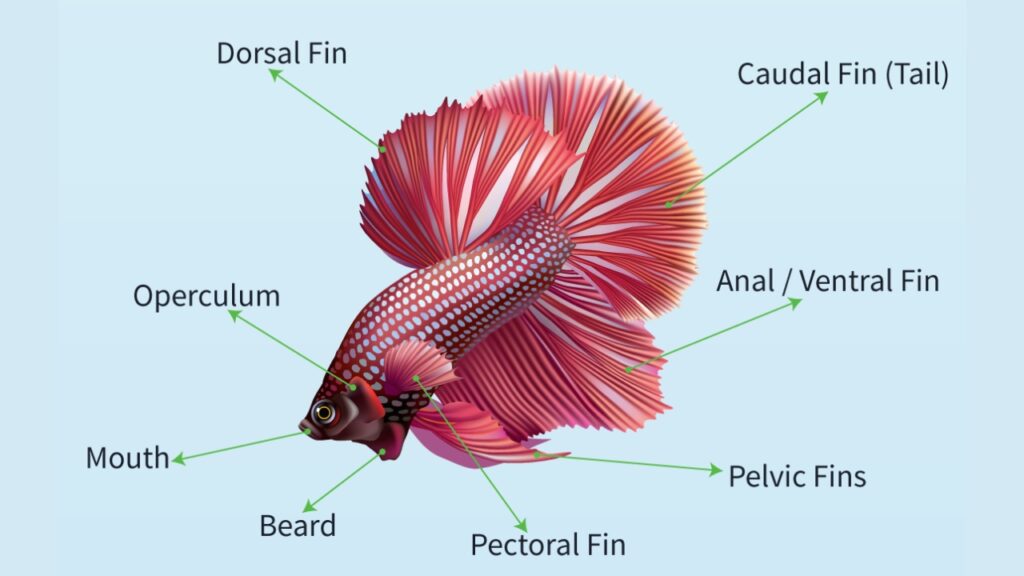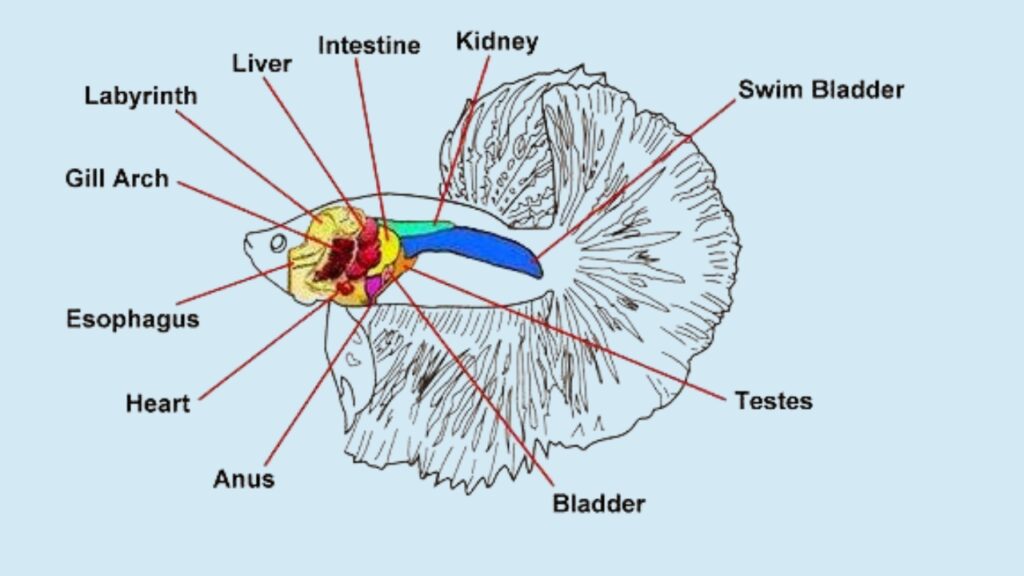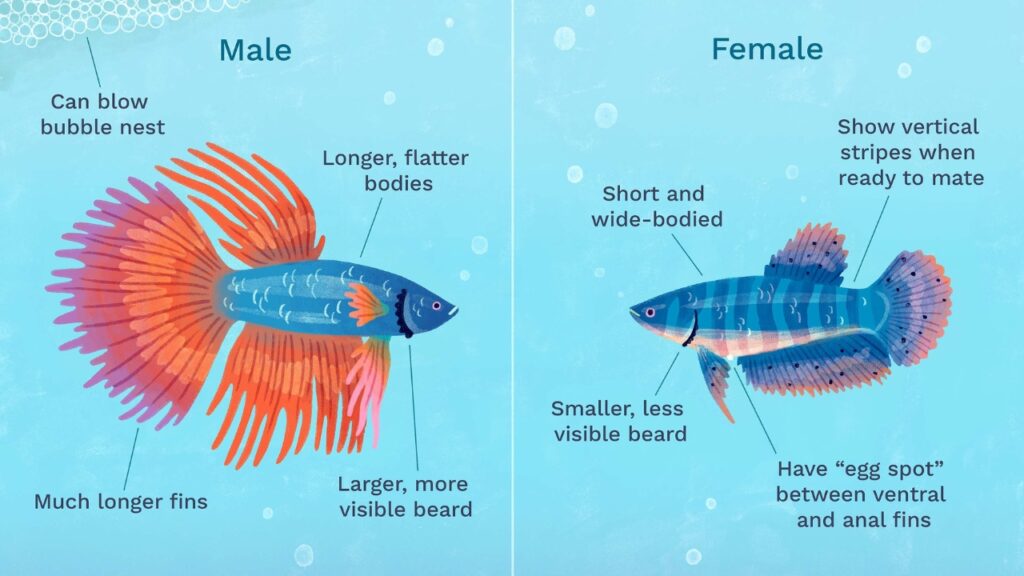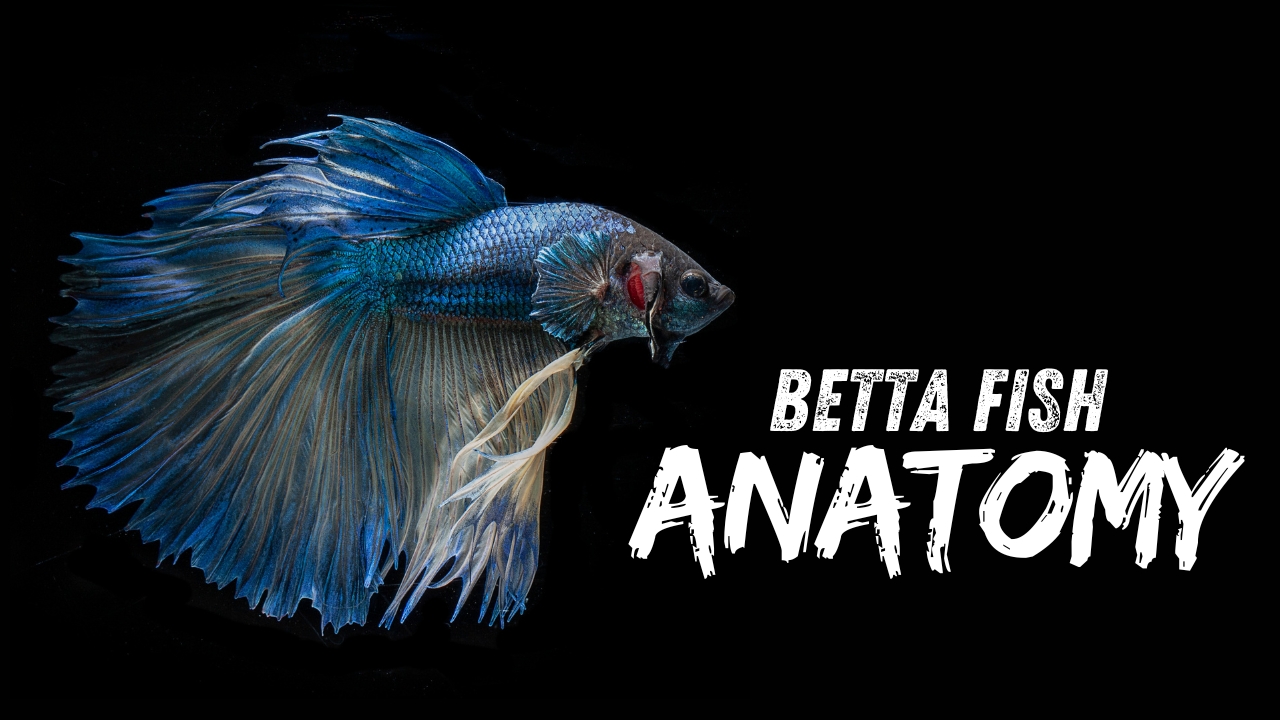Betta fish, also known as Siamese Fighting Fish, are among the most popular freshwater fish kept by aquarium hobbyists. Their bright colors, elegant fins, and unique personalities make them a favorite among beginners and experts alike. But to truly care for a betta fish and recognize signs of health or illness, it’s important to understand their anatomy.
In this detailed guide, we’ll explore betta fish anatomy from head to tail, using simple language and useful visuals for beginner fishkeepers, aquarium hobbyists, and students. Let’s dive in!
Table of Contents
External Anatomy of a Betta Fish
The external features of a betta fish are not only what make them visually striking but are also crucial to their health and mobility.

1. Head and Eyes
The head of a betta fish houses its mouth, eyes, nostrils, and brain. Betta fish have excellent eyesight compared to other fish species. Their eyes are located on either side of the head, giving them a wide field of view. However, they can’t see directly in front of their nose, and they rely on visual cues to recognize food, threats, or even their reflection.
Betta fish also have nares (nostrils) above the mouth that allow them to detect scents in the water, helping them locate food.
2. Mouth
Bettas have an upturned mouth, which indicates that they are surface feeders. They naturally hunt insects and larvae from the water’s surface in the wild. Their sharp little teeth help them grasp and break food down.
3. Operculum (Gill Cover)
Behind each eye, you’ll find a hard plate called the operculum, which protects the gills underneath. Betta fish breathe by taking in water through their mouth and passing it over their gills, where oxygen is absorbed. When the operculum flares, it’s often a display of aggression or defense.
Betta Fish Fins and Their Functions
A betta’s fins are not just decorative—they serve specific purposes like balance, steering, and speed.
4. Dorsal Fin
Located on the top of the betta, the dorsal fin helps with stability during swimming. In males, it is often long and flowing, adding to their dramatic appearance.
5. Caudal Fin (Tail Fin)
This is the large fan-shaped tail at the end of the body. It’s used for propulsion. Betta fish varieties like the Halfmoon, Crowntail, and Veiltail are classified based on the shape and size of this tail fin.
6. Anal Fin
The anal fin runs along the bottom of the betta from the belly to the tail. It helps with direction control and balance, especially during slow movements or when hovering.
7. Pelvic (Ventral) Fins
These two thin fins are located under the head and are used for steering and precision while swimming. Male bettas often have longer and more pointed pelvic fins compared to females.
8. Pectoral Fins
On either side of the body, just behind the gills, are the pectoral fins. These are used for maneuvering, braking, and hovering. They’re also one of the most active fins, constantly in motion.
Internal Anatomy of a Betta Fish
Understanding what’s inside a betta is just as important, especially when you’re trying to spot signs of swim bladder issues, constipation, or internal parasites.

9. Swim Bladder
The swim bladder is a gas-filled organ that helps a betta control its buoyancy. If your betta is swimming sideways or struggling to stay afloat, the swim bladder may be affected—often due to overfeeding or constipation.
10. Digestive System
Betta fish have a short digestive tract, meaning they are best fed in small portions. Overfeeding can lead to bloating or swim bladder disease. The stomach is located just behind the head and can easily become distended if too much food is consumed.
11. Liver and Kidneys
These organs help with detoxifying the blood and excreting waste. A high-protein diet is ideal for bettas, but poor water quality or fatty foods can strain the liver and kidneys, leading to health problems.
12. Heart
The heart is located near the gills. Like humans, betta fish rely on a functioning circulatory system to distribute oxygen and nutrients throughout the body.
13. Reproductive Organs
- Males have a small white spot near the anal fin, which is the genital papilla—used to release sperm.
- Females have ovaries and an egg spot (also called the ovipositor) where eggs are released during spawning.
14. Labyrinth Organ
One of the most fascinating aspects of betta anatomy is the labyrinth organ. This specialized organ allows bettas to breathe atmospheric air from the surface. It’s located above the gills and explains why bettas can survive in low-oxygen environments.
Betta Fish Coloration and Scales
Betta fish come in a dazzling variety of colors and scale types, thanks to selective breeding.
15. Scales and Skin
Betta scales are made of keratin, the same protein in human hair and nails. These scales act as a protective barrier against injury and infection. Underneath is a layer of mucus that also helps defend against bacteria and fungi.
16. Chromatophores
Betta fish colors come from pigment cells called chromatophores, which can expand or contract to change appearance. Some bettas also possess iridophores (light-reflecting cells), which give them a metallic or shimmering finish.
17. Color Changes
Stress, illness, and age can cause color fading. Likewise, bettas may change color during mating or when flaring. A healthy diet, clean water, and low stress can enhance coloration.
Signs of Healthy Anatomy in Betta Fish
Knowing the key indicators of a healthy betta can help you intervene early if something goes wrong.
✅ Fins are fully open and undamaged
✅ Scales lie flat against the body
✅ Bright, vibrant coloration
✅ Swimming is smooth and controlled
✅ Eyes are clear and not swollen
✅ No visible spots, swelling, or sores
Quick Facts: Male vs Female Betta Fish Anatomy

| Feature | Male Betta | Female Betta |
|---|---|---|
| Fin Length | Long and flowing | Shorter, rounder |
| Body Size | Slightly larger | Slightly smaller |
| Egg Spot | No | Visible white dot (ovipositor) |
| Behavior | More territorial | Less aggressive |
Conclusion
Learning about betta fish anatomy not only deepens your appreciation for these incredible creatures but also equips you with the knowledge to care for them properly. Whether you’re a beginner fishkeeper, student, or long-time aquarium hobbyist, understanding how a betta fish’s body works helps prevent health issues and ensures a happier, longer life for your aquatic companion.
If you’re considering adding a betta to your aquarium or already have one, keep this anatomy guide bookmarked. It might just be the key to becoming a true betta fish expert!
